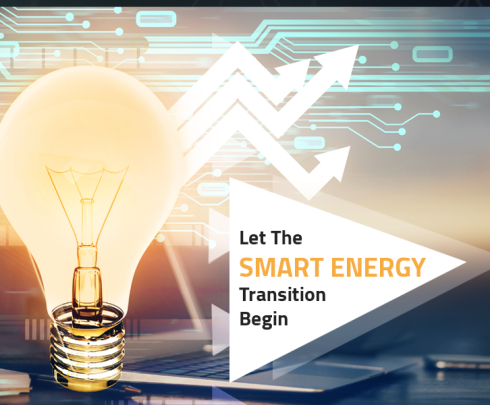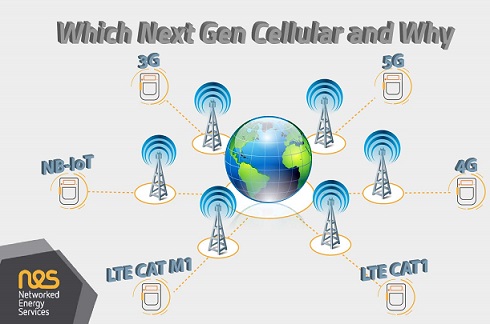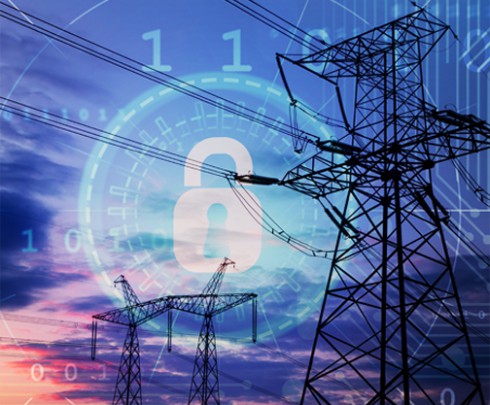
Making the smart grid intelligent: Using software to improve power reliability
Sep 12, 2018Networked Energy Services (NES) and eSmart Systems have written a joint white paper about making the smart grid intelligent. This blog article is an extract - read the full white paper here.
Timely actionable insight is the key to making the correct business and operational decisions. Over the last few decades, significant investment has been made in the monitoring and management of the medium- and high- voltage grids.
The latest generation of smart meters provides new levels of visibility of power and voltage quality at the substation transformer and the consumer. Some smart grid solutions even provide visibility of the low-voltage grid topology and connectivity, and can create measurements from within the low-voltage grid.
With the availability of information from the low-voltage grid, software solutions that process and analyse this information can make a positive contribution by providing timely actionable insight. This insight can be used to improve operational processes and can also have a positive impact on the quality of service that the end consumer receives.
In the following, we will explore how the latest smart metering solutions can be combined with new analytics tools to improve power reliability, by looking at three key scenarios:
- Improving Power Quality
- Assessing Impacts of Power Quality Problems
- Restoring Service
Improving power quality
Improving power quality is the fundamental step to take. This involves gathering as much information as possible about the current and historical performance of the low-voltage grid, from the substation to the consumer, and exposing this into analytics tools to help highlight the indicators of network quality problems.
The sensor network exposes a wide range of voltage and power quality parameters, at the substation and consumer premise, but also at points deep in the low-voltage grid. This information can be used to identify capacity problems and non-optimal configurations in the low-voltage grid, which can, through analytics, be used to trigger proactive maintenance activities as well as respond to more immediate problems which are directly affecting consumers, such as voltage and power quality degradations.
Modern smart meters provide high resolution data about e.g. consumption. By using advanced analytics on consumption patterns it is possible to:
- Group customers that have obvious similarities in consumption
- Identify new types of consumption, such as EVs in a certain area or even identify those consumers who have just bought an EV
- Identify new types of generation in an area, like those consumers who have highly effective solar panels.
This is information that affects the power distribution, so it is important to get an overview of this and it also helps in marketing use to make sure you increase the possibility for up-sales.
Assessing impacts
With problems in the low-voltage grid identified, it then becomes important to identify the scope of the impacts. Through closer integration of the sensor network and the analytics framework, it becomes possible to assess impacts in terms of both affected consumers, but also the business and social impact of the outages.
Not only is the topology of the low-voltage grid mapped out by the sensor network; the mapping between the topology and physical infrastructure, and topology and consumers can also be defined through integration with back-end systems.
These capabilities mean that both the possible root-cause and impact of fault can be assessed:
- Root-cause. Indicators of poor voltage or power quality can be mapped on the topology to «triangulate» towards a probable root-cause, such as a physically damaged line serving a wider range of consumers. The DSO can then dispatch field-engineers or technicians with more certainty as to the location of the fault, which, in turn, reduces the time to restore and the field work costs
- With the root-cause identified, the same approach of using topology can be applied to identify those consumers depending on supply over the faulty infrastructure, and so the DSO is able to start prioritising work based on consumer impact and track the end-customer’s experience with greater accuracy.
To improve the process of impact assessment and get faster resolutions it is important to have a wider perspective, a holistic view. DSOs need to utilize all data available to see as many correlations as possible.
Restoring service
With the root-cause and the consumer impact identified, it now becomes possible to stream-line how problems are resolved through:
Improved information: More of the right information, and more up-to-date information can be shared with the teams responsible for restoring the service. This can include information about the fault and information about possible recovery actions, such as identifying available capacity for re-routes.
Improved priority setting: Whilst prioritizing based on the number of impacted consumers is a positive first step, the ideal should be to prioritize based on commercial, business and social impacts. This requires close integration, through analytics, of a wide range of information sets which have not historically been part of the service restoration process.
The information generated from the sensor network provides a rich source of alarm/event and historical performance information, which can be used by the analytics framework to define actions, embedded into the field-engineer’s pack and accessed on-line by the engineer from the field if required.
With the amounts of data now available, we believe the ones who win are the ones that can utilize this data, do the right analysis and take the right actions.
The future for DSOs
The combination of a sensor network in the low-voltage grid, together with an analytics framework to draw insight from the information it exposes, provides a new and exciting set of possibilities for DSOs:
- The first step is to enrich the information available from the low-voltage grid; not just the voltage measurements at the substation and consumer, but also a wider range of quality information, on each phase of supply, with more detail within the low-voltage grid, and with additional topology discovery
- The second step is to provide this information into an analytics framework so that the large volumes of information can be processed to extract timely, actionable business and operational insight.
Such systems are available today, with Networked Energy Services Patagonia Energy Applications Platform and smart meters, along with the eSmart Systems analytics frameworks being excellent examples.












